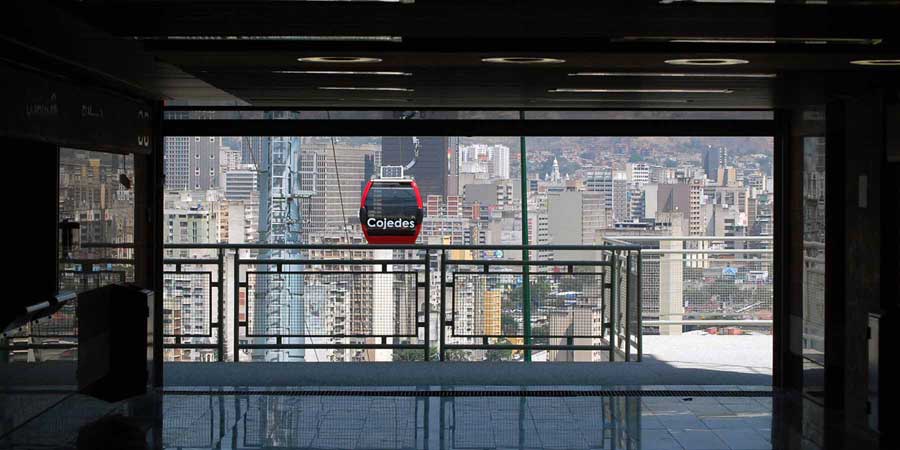
Two weeks ago I travelled to Medellin, Colombia and Caracas, Venezuela to tour five of the most important CPT systems in the world. This is Part 7 where I discuss the social mandate that underlies the Caracas Metocable. Image by Steven Dale.
If you’ve been paying attention, you’ve probably noticed something problematic about the Caracas Metrocable: The stations are enormous. We’re not talking about just “big” here. We’re talking about “big enough for Cirque du Soleil to perform in.”
This is because the stations themselves are not really stations at all. Whut? Exactly.
In actuality, the Caracas Metrocable stations are full-service community centres with multiple neighborhood facilities all under one roof including a Cable Propelled Transit line. Most of these facilities are not yet complete and as such the stations have an eery empty quality thus far. The plan, however, is to have gymnasiums, markets, dental offices, police stations, medical clinics, theatres, libraries and all other manner of social services located within the 5 stations united by the Metrocable.
The idea is to have each station host one or two such facilities. As each station is linked to the other via Metrocable, those within the poor barrios can travel quickly and cheaply between those services in a way that simply would not have been possible before the Metrocable. When you consider this component of the plan, the Metrocable is less a transit line and more the connective tissue that holds together a network of social services.
Whether or not you agree with the political ideology behind Hugo Chavez’s plan, you have to admit it’s bold and unique. It’s also costly. The price of the Metrocable including stations/community centres has been reported as $265 million USD and I’ve heard numbers as high as $300 million USD. Considering the system is only 1.8 kilometers long, you could practically build a subway for that price.
The price of the gondola system, however, was modest. Everything necessary for the gondola system (the “electro-mechanical” cost in industry-speak) was only $18 million USD.
Consider that for a moment: Only 6-7 % of the total cost of the Metrocable went to the transit system and infrastructure itself. The rest was spent on the stations/community centres and land expropriation costs.
I want to state this plainly so that no one opposed to the concept of cable transit can use Caracas as an example of how expensive the technology is: The Caracas Metrocable did not cost $300 million. It cost $18 million. The additional monies spent were on community centre facilities and land expropriation costs that were separate from the transit system itself.
Once again (because the internet is great at taking people out of context): The Caracas Metrocable did not cost $300 million. It cost $18 million. The additional monies spent were on community centre facilities and land expropriation costs that were separate from the transit system itself.
Should some of those additional monies be allocated to station costs? Yes, but not the vast majority of it. The Medellin Metrocable (which uses similar MDG technology) Linea K cost $26 million USD in 2006; that included 1.8 kms of length and 4 stations. Linea J cost $50 million USD in 2008; that included 2.7 km and 4 stations. Linea L cost $25 million USD in 2010; that included 4.8 km and 2 stations. It would be fair to allocate an additional $10 – $20 million dollars to the cost of the Metrocable itself, but no more than that.
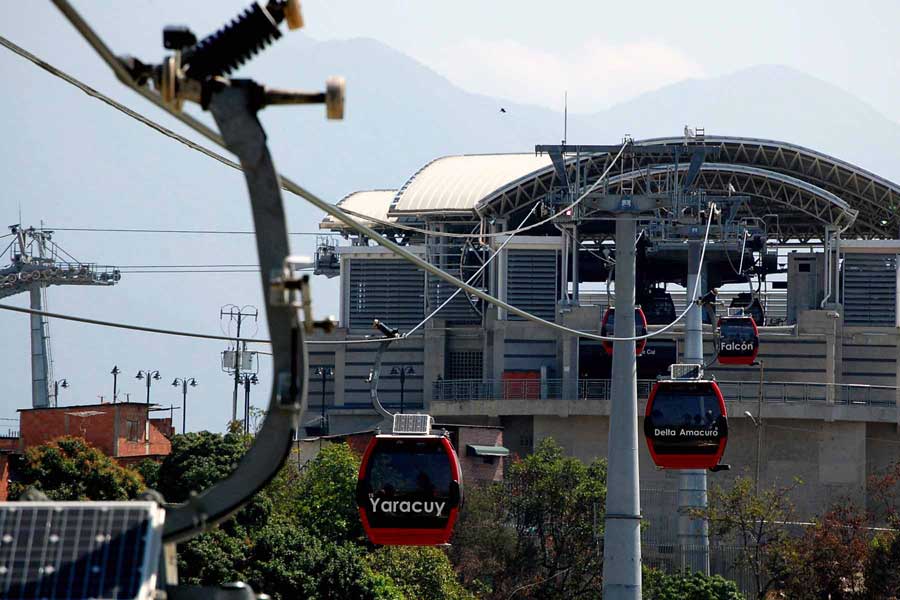
Perched high atop hills, the Caracas Metrocable stations are one small component of a much bigger network of community centres and social services. Image by Steven Dale
As a social experiment, it will be interesting to see how the Caracas Metrocable pans out. I, for one, am hopeful. Caracas needs these kinds of services, particularly in the barrios. One thing, however, I’m not certain of is the overt social message of the Metrocable. Many cabins are adorned with single word imperatives suggesting qualities which those in the barrio should aspire to and exemplify:
Sacrificio . . . Moral . . . Libertad . . . Equidad . . . Humanismo . . . Amor . . .
It’s an odd design choice that has nothing to do with the technology itself. But as one rides the Metrocable or sees them glide overhead, one can’t escape this blatant messaging. Granted, it’s hard to argue with the message: Sacrifice, Morals, Liberty, Equality, Humanity, Love. But at the same time, is it a transit agencies job to suggest how to behave? Maybe, maybe not.
In the western world we’re used to being told how to ride our transit. Hold the handrail. Exit by the rear doors. Don’t spit. Don’t litter. Give up your seat for the elderly. Mind the gap. These instructions transit agencies force upon us are nothing more than the practical application of the emotional instructions the Caracas Metrocable forces upon its riders.
Maybe we wouldn’t need so many rules and instructions in our transit systems if we simply had signs that read “Love” or “Equality.” Or not, I don’t know. It’s something I’ve wrestled with a lot since seeing it. Is it propaganda? No. But it veers pretty close to it and that’s what makes me uncomfortable. The message plays so blatantly upon emotions and that’s problematic. But at the same time, the sweet naiveté of the gesture is charming enough, innocent enough to catch even the most cynical observer off-guard.
I honestly don’t know. I’d love to know what everyone else thinks about this matter. Take a look at the images below and form your own opinion: Are the messages on the Caracas Metrocable propaganda? Are they amusing and pleasant? Are they harmless? Are they dangerous? What do you think?

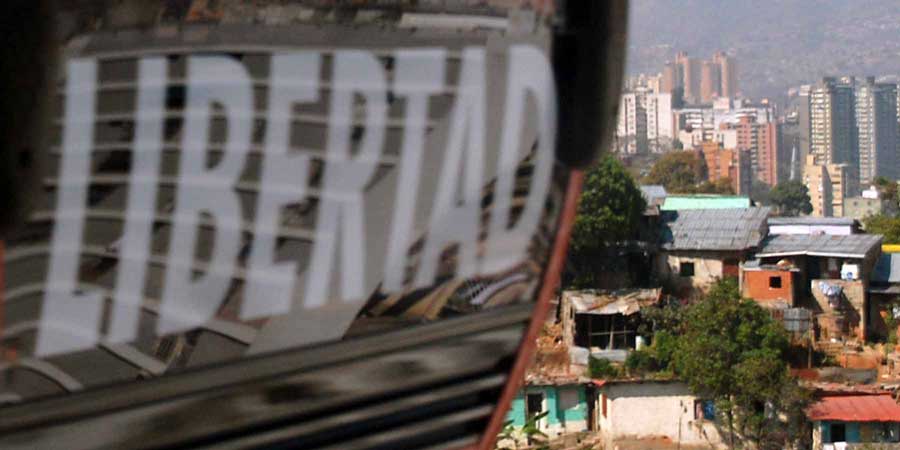
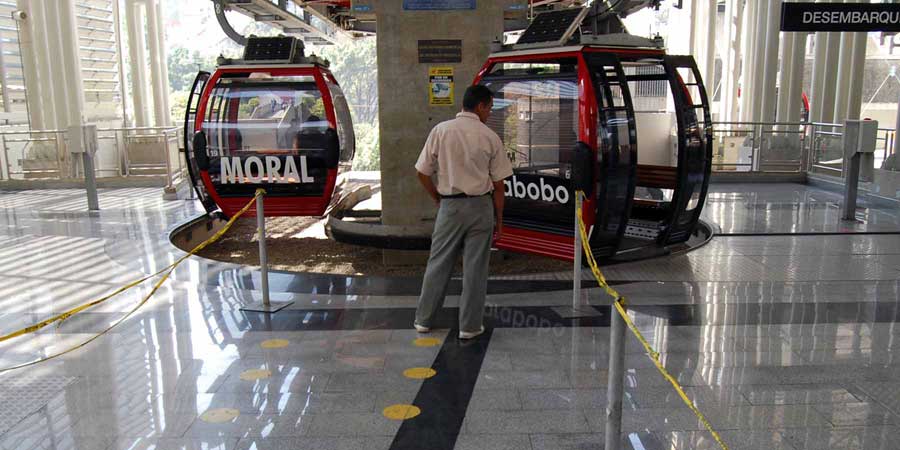
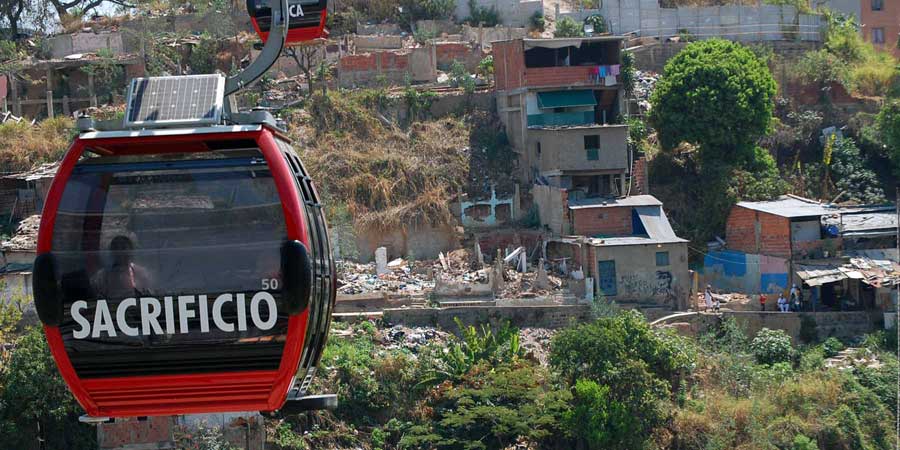
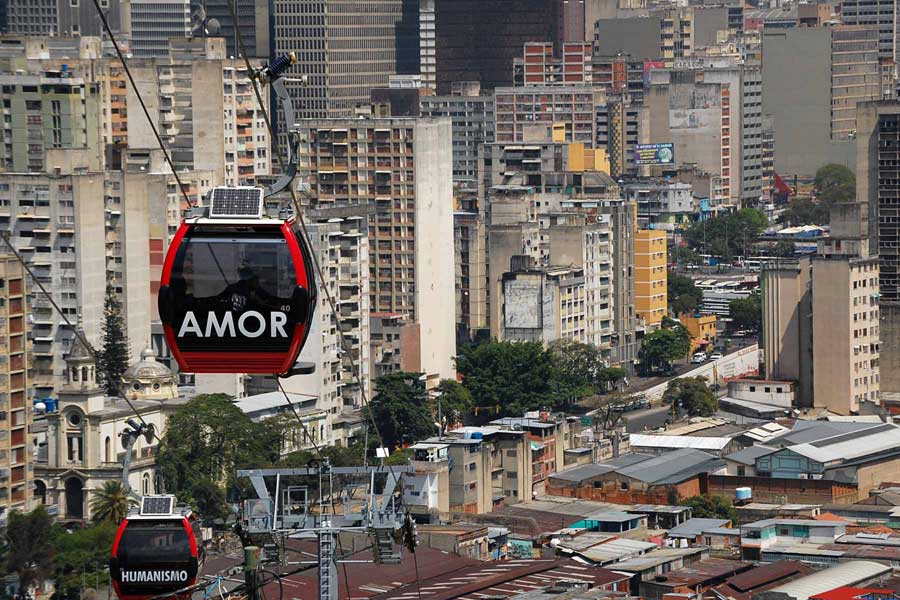
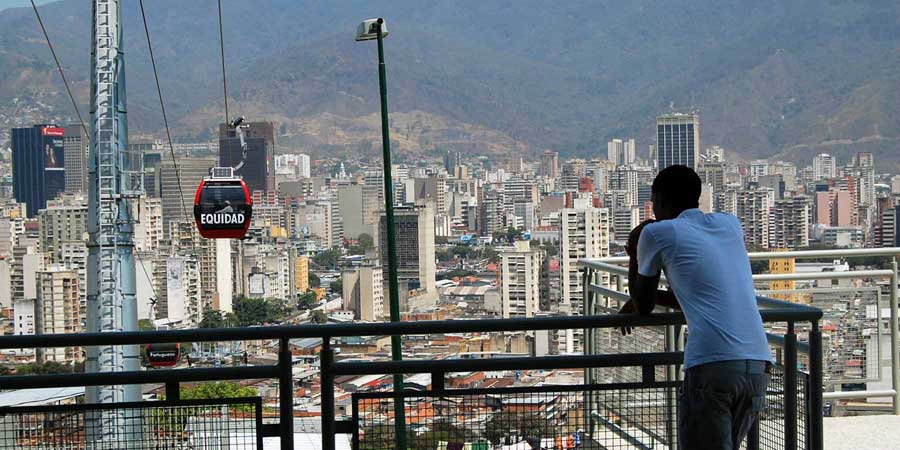
5 Comments
Think of it as a poem floating by. Presumably the gondolas are going to change order a lot, so it is a jumbled up poem. Love, Liberty, Equality. It all sounds good.
It’s got to be better than landing at Dublin airport one time, and thinking I’d landed in a place called Vodaphone.
Even if Hugo Chavez errs a little with his nuttiness sometimes, a. he got this CPT idea off the ground, and b. Love, Liberty, morality sound like universal humanist traits we can all aspire to.
That petrol at 4 cents a litre though. That is crazy.
Subconscious indoctrination? hmmmm. haha
But these aren’t bad qualities to engender, nor to think about.
I think I’d honestly prefer advertisement for honorable, idealistic characteristics than advertisements trying to influence me to buy some product.
Really interested in trying to piece together the cost structure of gondola projects. When you break it down into components, how does an extra terminal add to cost, how does a 90 deg turn add to cost etc. Do you have any good info on rough and tumble costing?
@ John,
Very hard to say. Every system is different. This is something we’ve been trying to assemble but are having difficulties. The manufacturers tend not to release prices except when a system is up for tender.